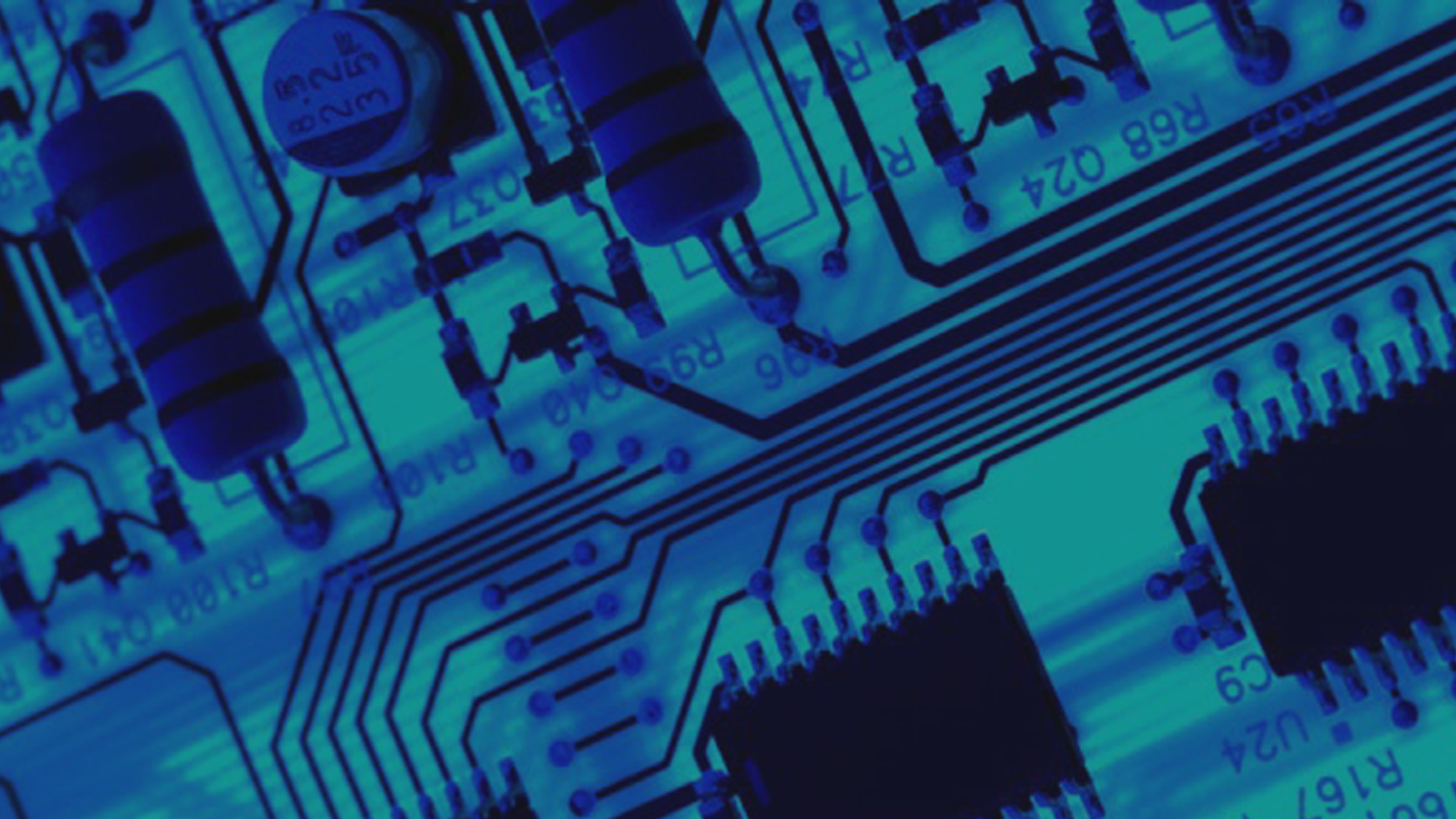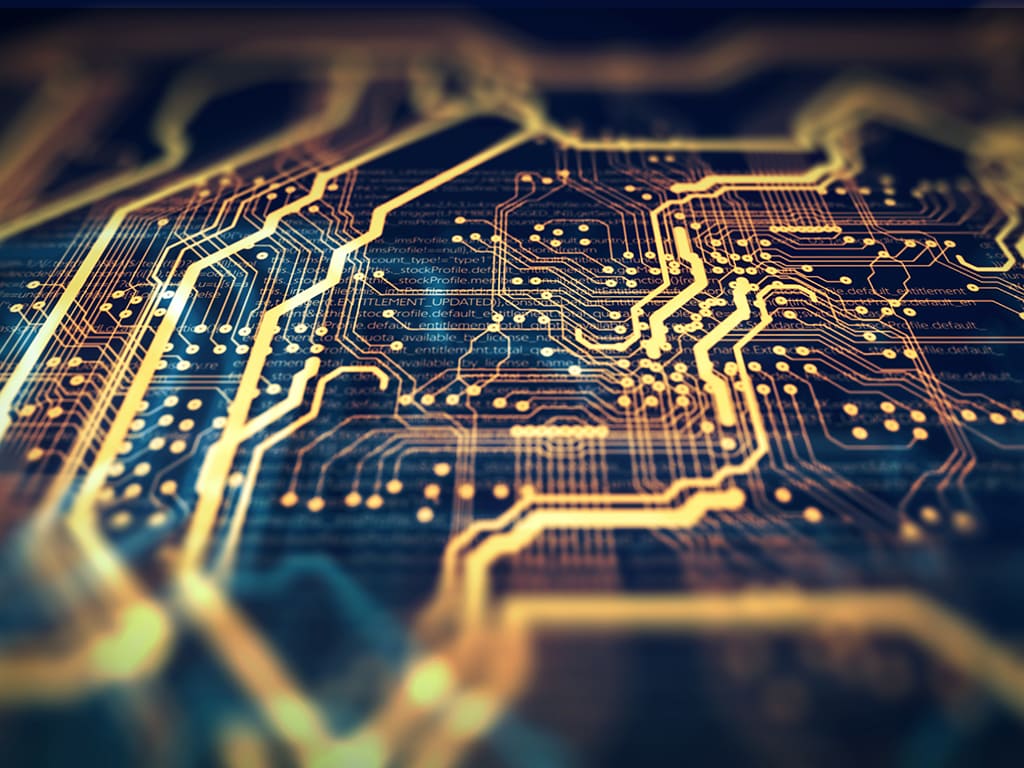You are using an out of date browser. It may not display this or other websites correctly.
You should upgrade or use an alternative browser.
You should upgrade or use an alternative browser.
BRN Discussion Ongoing
- Thread starter TechGirl
- Start date
supersonic001
Regular
Sign Up | LinkedIn
500 million+ members | Manage your professional identity. Build and engage with your professional network. Access knowledge, insights and opportunities.
Lovin this new Chippa Avatar ……
It’s not new.. it’s a facelift! We had it on beginning already!
Sign Up | LinkedIn
500 million+ members | Manage your professional identity. Build and engage with your professional network. Access knowledge, insights and opportunities.www.linkedin.com
Lovin this new Chippa Avatar ……
View attachment 61039
This one comes with AWD adaptive sensor control .. matrix LED… a hybrid engine with 500km pure electric range. And a EMBUGS system
DingoBorat
Slim
All expectations of dealing with them so far, have resulted in the bitter taste of a cooking Apple..All that glitters ...
Exclusive: Apple acquires Xnor.ai, edge AI spin-out from Paul Allen’s AI2, for price in $200M range
BY ALAN BOYLE, TAYLOR SOPER & TODD BISHOP on January 15, 2020
Apple buys Xnor.ai, an edge-centric AI2 spin-out, for price in $200M range (geekwire.com)
Apple has acquired Xnor.ai, a Seattle startup specializing in low-power, edge-based artificial intelligence tools, sources with knowledge of the deal told GeekWire.
The acquisition echoes Apple’s high-profile purchase of Seattle AI startup Turi in 2016. Speaking on condition of anonymity, sources said Apple paid an amount similar to what was paid for Turi, in the range of $200 million.
Xnor.ai didn’t immediately respond to our inquiries, while Apple emailed us its standard response on questions about acquisitions: “Apple buys smaller technology companies from time to time and we generally do not discuss our purpose or plans.” (The company sent the exact same response when we broke the Turi story.
…
The arrangement suggests that Xnor’s AI-enabled image recognition tools could well become standard features in future iPhones and webcams.
Xnor.ai’s acquisition marks a big win for the Allen Institute for Artificial Intelligence, or AI2, created by the late Microsoft co-founder Paul Allen to boost AI research. It was the second spin-out from AI2’s startup incubator, following Kitt.ai, which was acquired by the Chinese search engine powerhouse Baidu in 2017 for an undisclosed sum.
The deal is a big win as well for the startup’s early investors, including Seattle’s Madrona Venture Group; and for the University of Washington, which serves as a major source of Xnor.ai’s talent pool.
The three-year-old startup’s secret sauce has to do with AI on the edge — machine learning and image recognition tools that can be executed on low-power devices rather than relying on the cloud. “We’ve been able to scale AI out of the cloud to every device out there,” co-founder Ali Farhadi, who is the venture’s CXO (chief Xnor officer) as well as a UW professor, told GeekWire in 2018.
This Apple patent is for compressing AI models. one of the inventors is ex-Xnor.
US11651192B2 Compressed convolutional neural network models 20190212 Rastegari nee Xnor
Systems and processes for training and compressing a convolutional neural network model include the use of quantization and layer fusion. Quantized training data is passed through a convolutional layer of a neural network model to generate convolutional results during a first iteration of training the neural network model. The convolutional results are passed through a batch normalization layer of the neural network model to update normalization parameters of the batch normalization layer. The convolutional layer is fused with the batch normalization layer to generate a first fused layer and the fused parameters of the fused layer are quantized. The quantized training data is passed through the fused layer using the quantized fused parameters to generate output data, which may be quantized for a subsequent layer in the training iteration.
[0018] A convolutional neural network (CNN) model may be designed as a deep learning tool capable of complex tasks such as image classification and natural language processing. CNN models typically receive input data in a floating point number format and perform floating point operations on the data as the data progresses through different layers of the CNN model. Floating point operations are relatively inefficient with respect to power consumed, memory usage and processor usage. These inefficiencies limit the computing platforms on which CNN models can be deployed. For example, field-programmable gate arrays (FPGA) may not include dedicated floating point modules for performing floating point operations and may have limited memory bandwidth that would be inefficient working with 32-bit floating point numbers.
[0019] As described in further detail below, the subject technology includes systems and processes for building a compressed CNN model suitable for deployment on different types of computing platforms having different processing, power and memory capabilities.
Of course, that does not absolutely preclude the possibility that Apple are running the NN model on a more efficient SoC.
cosors
👀
At least because Ai has to be everywhere at the moment, 'no' company can avoid the topic, it has to be worth a try and there is subsidy money and there have to be conditions for investments in future tec and the old one is out of the question. Just yesterday I saw a global analysis of Ai and where it is taking place, in addition to research. I couldn't see Germany at a quick glance. But maybe I'll have another look to see if I can find it again. What interests me are products that can be bought from companies like those in Germany.) Just because companies are running a research lab here and dropping slices by slices of white paper on projects because they have obviously or perhaps lost touch doesn't convince me to be confident that Germany plays a really important role in this topic. So far, I'm taking MB's hub seriously.Why would the German trinity of automotive suppliers each have established their own AI Labs if they only assembled components?
View attachment 61017
View attachment 61018 View attachment 61019
They spend a lot of moolah on R&D in general and also offer all sorts of engineering services:



Hardware Engineering
We develop customized hardware solutions for a variety of industries. Our portfolio ranges from head-up displays up to industrial controls in various sectors.conti-engineering.com

Research & Development - Looking at the Big Picture - ZF
With digital innovations and continuously high investments in research and development, we are among the leading technology companies.www.zf.com
I'm one of the sceptics, but I'm happy to be proven wrong. But I don't want to get into debate 'loops', as I'm just an observer from the sidelines and don't have serious insight and I'm not a politician too.
Last edited:
DingoBorat
Slim
Impressive first look and demonstration, of the new Atlas.Our CTO thinks this is great

Meet our next generation Atlas! A humanoid designed for commercial applications. We are taking all we have learned over 15 years of research on our hydraulic Atlas platform and putting it into the… | Marc Theermann | 217 comments
Meet our next generation Atlas! A humanoid designed for commercial applications. We are taking all we have learned over 15 years of research on our hydraulic Atlas platform and putting it into the next generation of the program, a fully electric Atlas robot designed for real-world applications...www.linkedin.com
View attachment 61029 View attachment 61030
All these new humanoid robots coming out, will need efficient brains.
AKIDA technology can deliver.
Fullmoonfever
Top 20
Giving me Buzz vibes
Sign Up | LinkedIn
500 million+ members | Manage your professional identity. Build and engage with your professional network. Access knowledge, insights and opportunities.www.linkedin.com
Lovin this new Chippa Avatar ……
View attachment 61039
Impressive first look and demonstration, of the new Atlas.
All these new humanoid robots coming out, will need efficient brains.
AKIDA technology can deliver.
It reminds me this
HopalongPetrovski
I'm Spartacus!
Impressive first look and demonstration, of the new Atlas.
All these new humanoid robots coming out, will need efficient brains.
AKIDA technology can deliver.
Dad blang bucket o' bolts........
Oh, the pain, the pain!!!
rgupta
Regular
Let us wait and watch.So is there a chance Apple is utilising Akida?
Either apple uses oor technology or management claim of 3years superiority over others is in question.
But it is big affirmative stamp to brainchip thinking. We will see a big market existence for on device processing and will get a good shre our of that.
Smoothsailing
Regular
Indeed it puts a big question mark over the 3 year lead doesn’t it.Let us wait and watch.
Either apple uses oor technology or management claim of 3years superiority over others is in question.
But it is big affirmative stamp to brainchip thinking. We will see a big market existence for on device processing and will get a good shre our of that.
I would most definitely like to hear management thoughts on this if we are NOT involved ….than this question needs to be answered 100%
rgupta
Regular
Let us wait and watch.Indeed it puts a big question mark over the 3 year lead doesn’t it.
I would most definitely like to hear management thoughts on this if we are NOT involved ….than this question needs to be answered 100%
Let us wait and watch.
Either apple uses oor technology or management claim of 3years superiority over others is in question.
But it is big affirmative stamp to brainchip thinking. We will see a big market existence for on device processing and will get a good shre our of that.
Indeed it puts a big question mark over the 3 year lead doesn’t it.
I would most definitely like to hear management thoughts on this if we are NOT involved ….than this question needs to be answered 100%
DingoBorat
Slim
"At least because Ai has to be everywhere at the moment, 'no' company can avoid the topic"At least because Ai has to be everywhere at the moment, 'no' company can avoid the topic, it has to be worth a try and there is subsidy money and there have to be conditions for investments in future tec and the old one is out of the question. Just yesterday I saw a global analysis of Ai and where it is taking place, in addition to research. I couldn't see Germany at a quick glance. But maybe I'll have another look to see if I can find it again. What interests me are products that can be bought from companies like those in Germany.) Just because companies are running a research lab here and dropping slices by slices of white paper on projects because they have obviously or perhaps lost touch doesn't convince me to be confident that Germany plays a really important role in this topic. So far, I'm taking MB's hub seriously.
I'm one of the sceptics, but I'm happy to be proven wrong. But I don't want to get into debate 'loops', as I'm just an observer from the sidelines and don't have serious insight and I'm not a politician too.

It would literally be like shooting fish in a barrel, for the BrainChip sales team, in the current environment.
Even ol snake eyes, would have met his targets.
There is absolutely no doubt in my mind, that they are extremely busy.
Don't let the absence of visible progress on the sales front fool you, or anyone here.
I can only repeat myself. There are indeed some small investors who, through their daily meticulous tracking of Akida and the posting of many contributions, believe they have a VIP status and claims against BrainChip. For example, insight into confidential contracts or demanding immediate clarification of certain issues.
I would like to remind once again that we are only voluntary investors who want a piece of the money. The private interest in the technology or the company, or because one is an investor, does not give anyone the right to be rude to the founders or to question their competence. Anyone who now says, "As an investor, I have the right to..." yes, and in this case, there are scheduled votes in which you can participate. With all other demands and interference, one makes oneself ridiculous. So continue to make your research and postings and let the management work!
I would like to remind once again that we are only voluntary investors who want a piece of the money. The private interest in the technology or the company, or because one is an investor, does not give anyone the right to be rude to the founders or to question their competence. Anyone who now says, "As an investor, I have the right to..." yes, and in this case, there are scheduled votes in which you can participate. With all other demands and interference, one makes oneself ridiculous. So continue to make your research and postings and let the management work!
CHIPS
Regular
Our CTO thinks this is great

Meet our next generation Atlas! A humanoid designed for commercial applications. We are taking all we have learned over 15 years of research on our hydraulic Atlas platform and putting it into the… | Marc Theermann | 217 comments
Meet our next generation Atlas! A humanoid designed for commercial applications. We are taking all we have learned over 15 years of research on our hydraulic Atlas platform and putting it into the next generation of the program, a fully electric Atlas robot designed for real-world applications...www.linkedin.com
View attachment 61029 View attachment 61030
Anthony Lewis is a great fan of robotics, so it is not surprising that he celebrates this. This does not necessarily have anything to do with BrainChip.
rgupta
Regular
Let us wait and watch.
Either apple uses oor technology or management claim of 3years superiority over others is in question.
But it is big affirmative stamp to brainchip thinking. We will see a big market existence for on device processing and will get a good shre our of that.
To me where ever it ends it will be big positive for brainchip and my reasons areI love this kind of sarcasm! It gives kind of a freshness into the debate.. okok let’s try this… if akida is not in the whole Tesla program incl. falcon etc… I will fire Rob !
1. It will be big affirmation to ideology of brainchip i.e cloud free processing at the edge
2. Apple is one of the biggest customer of arm and I assume arm tech should have a lot in apple technology. We are fully compatible with arm, which means implementation of akida cores can be quite straigh forward.
3. No one company can capture 100% market share of a product and even if apple does not use us their competitors will need us and looking at our MC that will be a big plus for SH.
4. From the Mercedes what we learned technology is revolutionary but applying the same for commercial usage have its own limitations and no big company will try the same until they find it fool proof. Apple have a history of keep quite until they blast the market.
So I still feel even if we are not there yet, we will there is near future very soon.
Biggest plus to me atleast a company as big as apple is feeling a need for technology like that.
So yes in the end let us wait and watch but to me in all aspects it will be a big positive development for overall develop of brainchip as a tech company.
cassip
Regular
Hi all,
could be interesting:
"SAN FRANCISCO, April 17 (Reuters) - SiTime (SITM.O)
on Wednesday introduced a chip that it says is designed to help data centers built for artificial intelligence applications run more efficiently.
SiTime makes what are known as timing chips, whose job is set a steady beat for all the parts of a computer and keep them running together in sync, like a conductor in an orchestra directing multiple groups of instruments. The company says its new line of chips, called Chorus, can do so with 10 times more precision than older styles of timing chips.
SiTime CEO Rajesh Vashist said the company aims to help customers save electricity with that precision. SiTime's chips themselves require less than a watt of power, but powerful AI chips such as Nvidia's (NVDA.O)
, opens new tab require more than 1,000 watts of power.
With a more precise clock to keep all the elements of a computer in sync, parts of the machine can be turned off for a few milliseconds at a time when they are not in use. Over the multiple years a power-hungry data center server might be in use, it can generate energy savings, though the amount will depend on how SiTime's chips are used.
"We deliver timing that they can rely on so that they can wake up their products and bring data more efficiently to them, rather than just running more often," Vashist said in an interview.
SiTime said the chips will be available in the second half of this year."
SiTime was discussed here. It is owned by MegaChips (?).
Regards
Cassip
could be interesting:
"SAN FRANCISCO, April 17 (Reuters) - SiTime (SITM.O)
on Wednesday introduced a chip that it says is designed to help data centers built for artificial intelligence applications run more efficiently.
SiTime makes what are known as timing chips, whose job is set a steady beat for all the parts of a computer and keep them running together in sync, like a conductor in an orchestra directing multiple groups of instruments. The company says its new line of chips, called Chorus, can do so with 10 times more precision than older styles of timing chips.
SiTime CEO Rajesh Vashist said the company aims to help customers save electricity with that precision. SiTime's chips themselves require less than a watt of power, but powerful AI chips such as Nvidia's (NVDA.O)
, opens new tab require more than 1,000 watts of power.
With a more precise clock to keep all the elements of a computer in sync, parts of the machine can be turned off for a few milliseconds at a time when they are not in use. Over the multiple years a power-hungry data center server might be in use, it can generate energy savings, though the amount will depend on how SiTime's chips are used.
"We deliver timing that they can rely on so that they can wake up their products and bring data more efficiently to them, rather than just running more often," Vashist said in an interview.
SiTime said the chips will be available in the second half of this year."
SiTime was discussed here. It is owned by MegaChips (?).
Regards
Cassip
I wouldn't be so sure. Personally i think there's a better than average chance we're involved with Hyundai.Anthony Lewis is a great fan of robotics, so it is not surprising that he celebrates this. This does not necessarily have anything to do with BrainChip.
Not the first boston dynamics post brn staff have liked either
Imo dyor
Last edited:
Evening KMuzza ,
Obviously a very cool chip , with sales to boot.
The only mob that we have , had , a confirmed partnership with was....
MAGIK EYE as opposed to this company called MOBILEYE.
MAGIK EYE was / is a Japanese company when thay were announced as a partner ......some time ago.
From memory over 2 years ago.
 magik-eye.com
magik-eye.com

 brainchip.com
brainchip.com
Would be nice though , ...who knows... I certainly do not.
Regards,
Esq.
Obviously a very cool chip , with sales to boot.
The only mob that we have , had , a confirmed partnership with was....
MAGIK EYE as opposed to this company called MOBILEYE.
MAGIK EYE was / is a Japanese company when thay were announced as a partner ......some time ago.
From memory over 2 years ago.
Magik Eye Inc.
The Magik Eye sensor is revolutionizing how machines see the world. We’ve put together a team of leading experts in optical science and computer vision to reinvent 3D vision, making it more performant, more reliable, and much less expensive.

BrainChip and MagikEye Join Forces to Advance 3D Perception Technology
BrainChip Inc and Magik Eye Inc. Partner to Combine Best of AI with 3D Sensing for Total 3D Vision Solution
Would be nice though , ...who knows... I certainly do not.
Regards,
Esq.
Last edited:
Similar threads
- Replies
- 0
- Views
- 4K
- Replies
- 8
- Views
- 5K
- Replies
- 0
- Views
- 3K
